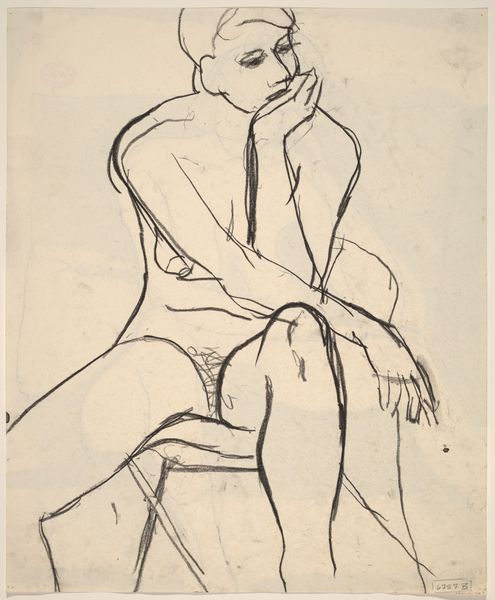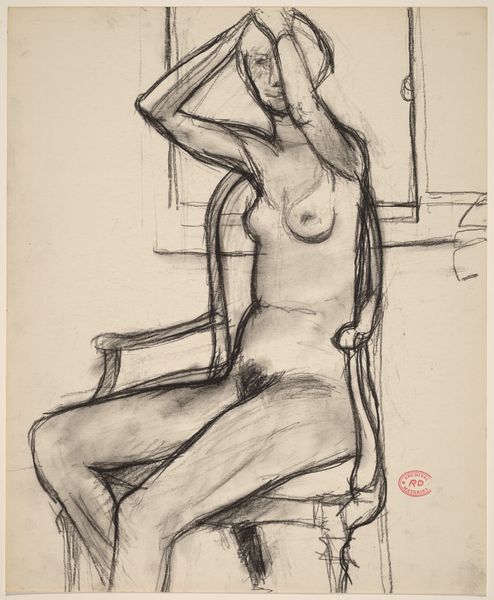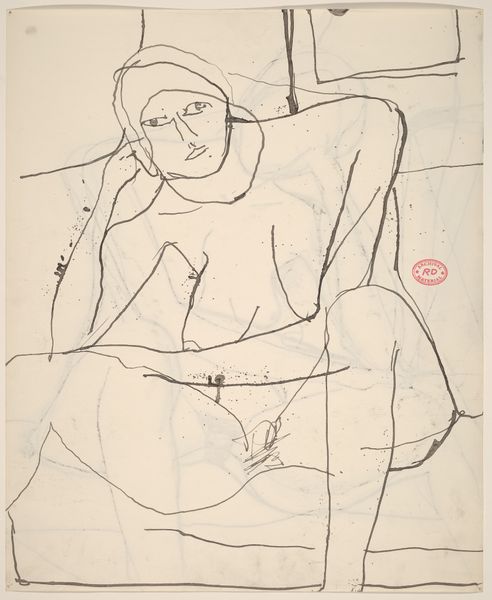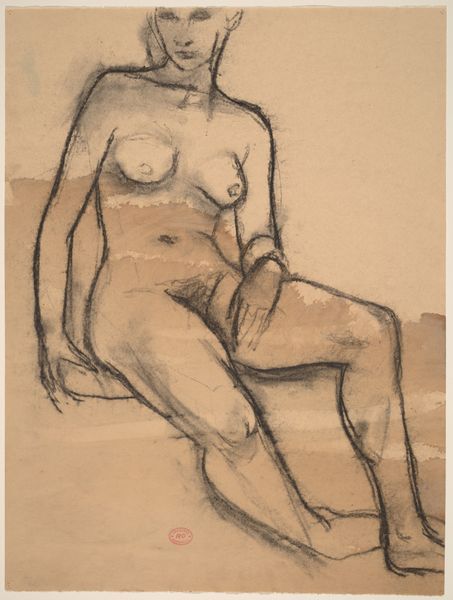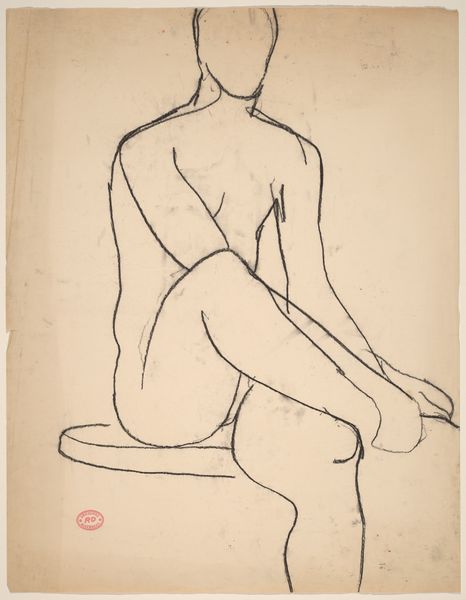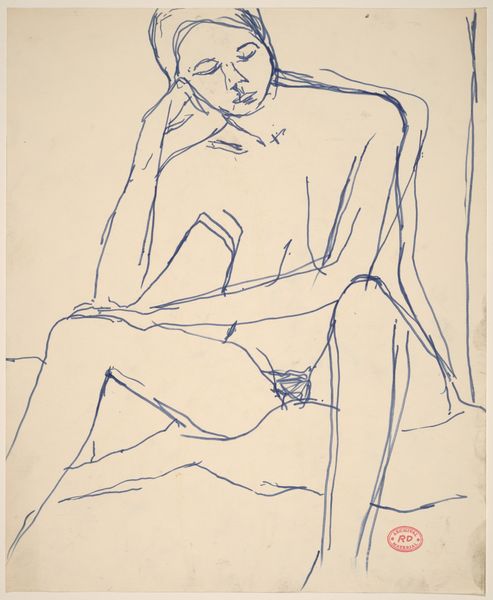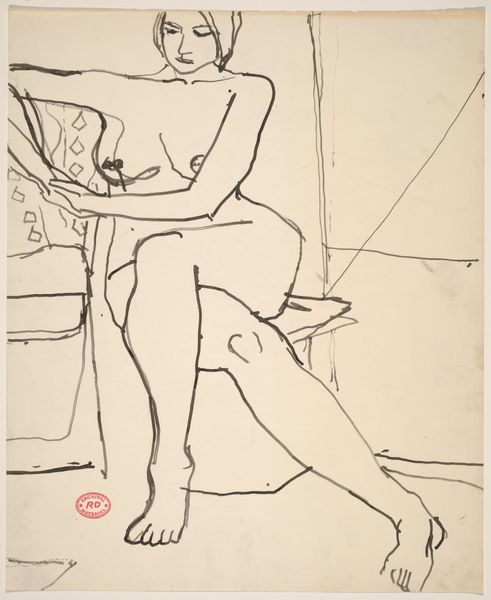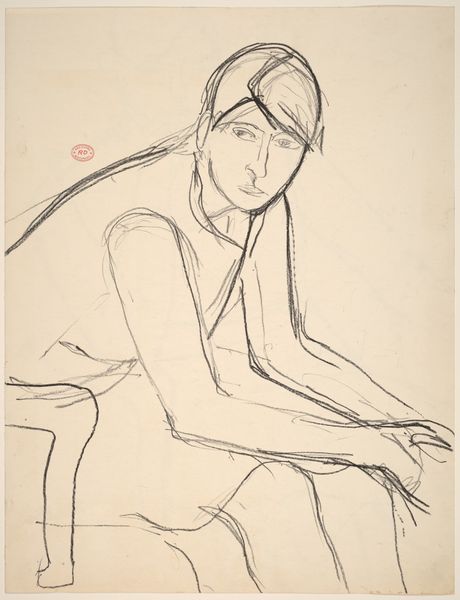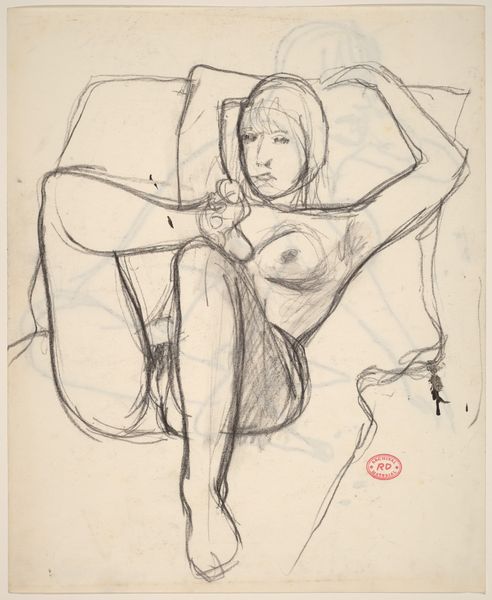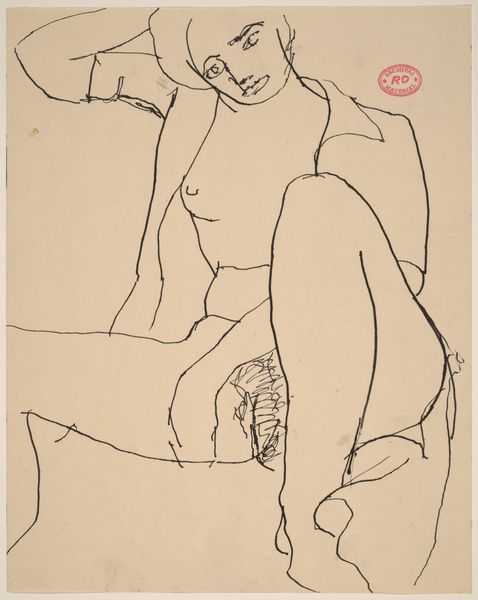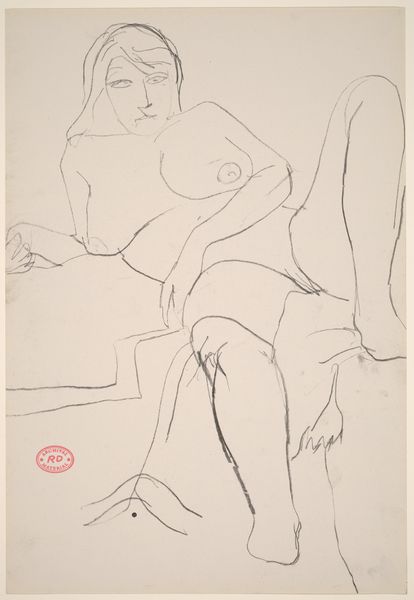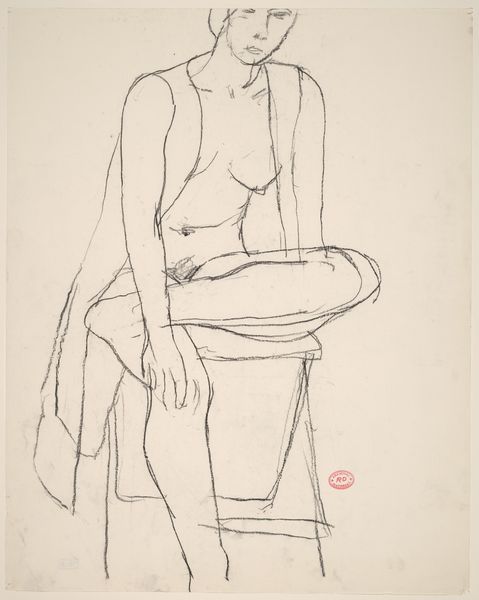![Untitled [female nude seated on the floor] by Richard Diebenkorn](/_next/image?url=https%3A%2F%2Fd2w8kbdekdi1gv.cloudfront.net%2FeyJidWNrZXQiOiAiYXJ0ZXJhLWltYWdlcy1idWNrZXQiLCAia2V5IjogImFydHdvcmtzL2Y4NGUwZjQwLThlMzQtNDc4Yy05MjMwLTY0ZjU3OWYxMTg3Yi9mODRlMGY0MC04ZTM0LTQ3OGMtOTIzMC02NGY1NzlmMTE4N2JfZnVsbC5qcGciLCAiZWRpdHMiOiB7InJlc2l6ZSI6IHsid2lkdGgiOiAxOTIwLCAiaGVpZ2h0IjogMTkyMCwgImZpdCI6ICJpbnNpZGUifX19&w=3840&q=75)
drawing, ink, pen
#
portrait
#
drawing
#
ink drawing
#
pen sketch
#
figuration
#
bay-area-figurative-movement
#
ink
#
pen
#
nude
Dimensions: overall: 43.2 x 35.6 cm (17 x 14 in.)
Copyright: National Gallery of Art: CC0 1.0
Curator: I find this untitled ink and pen drawing by Richard Diebenkorn, made sometime between 1955 and 1967, immediately striking in its apparent simplicity. The figure has this contemplative nature that really draws me in. What is your first reaction to the artwork? Editor: My initial impression is one of vulnerability. The raw lines and the sitter’s introspective gaze… it evokes a sense of quiet melancholy. The lack of adornment definitely emphasizes the exposed nature of the figure, but also perhaps suggests some form of introspection. Curator: I think your reading certainly aligns with a perspective focused on emotional and cultural symbolism. What I find especially compelling, though, is how this relatively modest pen sketch embodies broader shifts in artistic representation during the mid-20th century. The figure, in her seeming candidness, also subtly challenges the power dynamics inherent in traditional nude depictions. Editor: Precisely. Nudity itself is laden with cultural meaning, reflecting societal attitudes towards the body and sexuality. And this artwork's reliance on line, rather than a display of anatomical prowess, emphasizes interiority rather than exterior spectacle. We tend to associate curves and lush color with sensual female images, but here we are invited to reflect on something far more stripped down. Curator: It's interesting to consider how the artwork's ambiguity extends to the cultural politics of its time. Think about the rising visibility of women in postwar society, as well as evolving ideas about feminine identity, all reflected in the choices of what images become worthy for museum display. Editor: Indeed. We could even consider the symbol of the pen as instrument, or maybe the creative eye of the male artist; perhaps they provide another angle from which we can assess the psychological relationship here between the artist and model? And her posture even seems slightly awkward or self-conscious, reinforcing a contemporary depiction that veers away from mythologizing a passive body into presenting an authentic sitter. Curator: And even beyond the subject matter itself, it's also key to acknowledge how art institutions, even today, selectively amplify voices and images, influencing whose stories get told and whose aesthetics are celebrated. Editor: Absolutely, I completely agree. When encountering an artwork, a dialogue like ours may expose its layered interpretations through symbols as much as cultural trends of the era. Curator: For me, this artwork brings so much to the surface regarding what narratives become amplified as relevant history versus artistic practice.
Comments
No comments
Be the first to comment and join the conversation on the ultimate creative platform.
